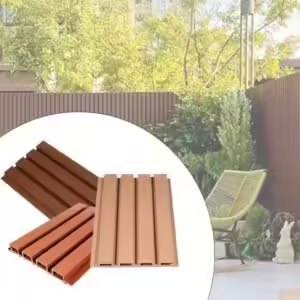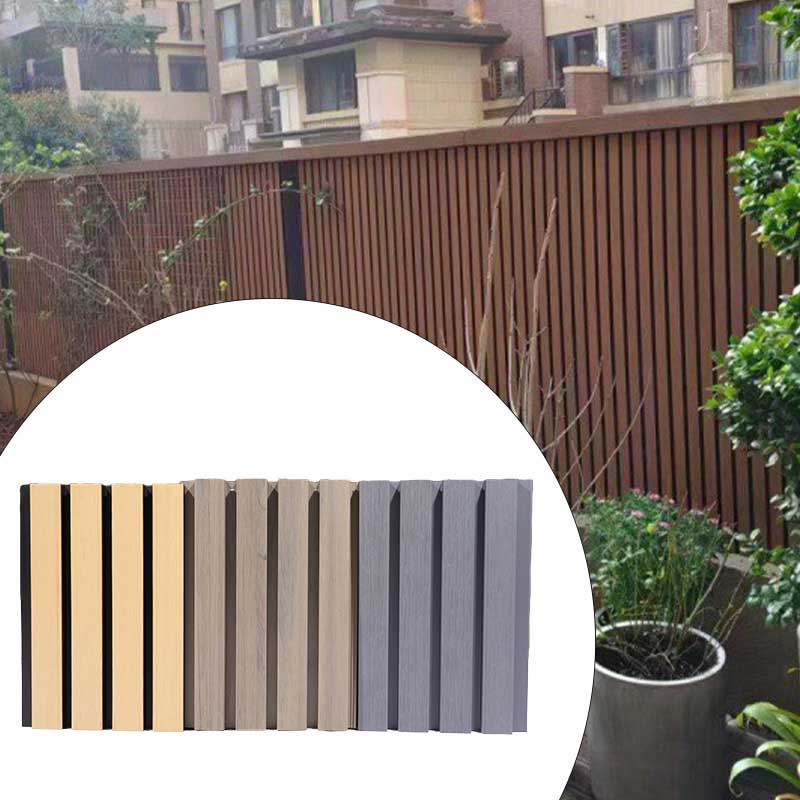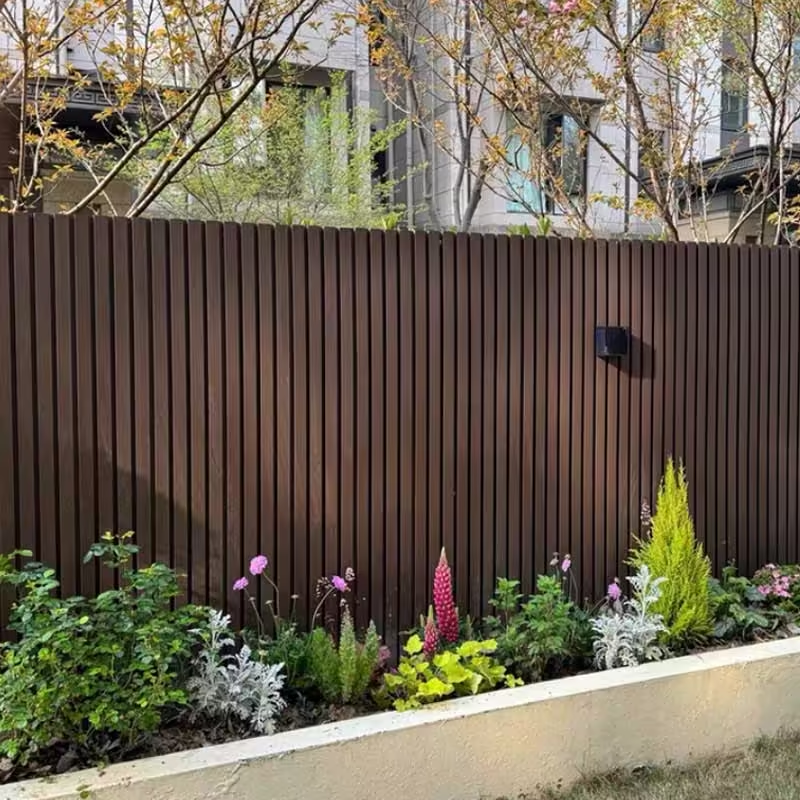Welcome to My Blog! 🌟
Before we dive into the content, let’s stay connected! Join me on my social media platforms where I share exclusive insights, engage with our amazing community, and post regular updates. Here’s how you can connect with me:
📘 Facebook: Follow Me on Facebook
Now, let’s embark on this journey together. I hope you find the content here insightful, engaging, and most importantly, valuable. Let’s explore, learn, and grow together! 🚀
Feel free to share your thoughts and feedback in the comments or on my social media—I’d love to hear from you! 😊
Table of Contents
Introduction

When it comes to enhancing the beauty, privacy, and security of your property, WPC fence panels are an increasingly popular choice. But before you make a purchase, there are several important factors to consider. In this blog, we’ll explore ten key things you should know about WPC fence panels to help you make an informed decision.
What Are WPC Fence Panels?
WPC stands for Wood – Plastic Composite. WPC fence panels are made by combining wood fibers, plastic polymers, and additives. This unique combination results in a material that offers the best of both worlds: the natural look of wood and the durability and low – maintenance properties of plastic.
Thing 1: Material Composition
Wood Fiber Content
The wood fiber content in these composite panels can vary. A higher proportion of wood fibers generally imparts a more natural wood – like appearance. However, if not properly treated, they may be more prone to moisture absorption and swelling. Most of these panels have a wood fiber content ranging from 50% to 70%.
Plastic Polymer Type
The type of plastic polymer used in these products is crucial. Common polymers include high – density polyethylene (HDPE) and polyvinyl chloride (PVC). HDPE is known for its strength and chemical resistance, while PVC offers good flexibility and weather resistance.
Additives
Additives are used in WPC fence panels to improve various properties. UV stabilizers are added to prevent the panels from fading and becoming brittle due to sunlight exposure. Fire retardants can enhance the fire safety of the panels, especially in areas with high fire risks.
Thing 2: Durability and Longevity
Resistance to Rot and Decay
One of the major perks of these composite panels is their resistance to rot and decay. Unlike traditional wooden fences, they don’t absorb water easily, meaning they’re less likely to rot even in damp conditions.
Insect Resistance
WPC fence panels are also resistant to insects such as termites. The plastic component in the panels makes them unappealing to insects, reducing the risk of damage.
Weather Resistance
They can withstand a wide range of weather conditions. They’re resistant to extreme temperatures, from freezing cold to scorching heat. Also, they don’t warp or crack easily due to humidity changes.
Thing 3: Aesthetic Appeal

Color Options
These panels come in a variety of colors. You can pick from natural wood tones like cedar, oak, and teak, or go for more contemporary colors such as gray, black, or white. Some manufacturers even offer custom – coloring options.
Texture and Finish
The texture and finish of WPC fence panels can mimic the look of real wood. You can find panels with smooth, brushed, or wood – grain finishes. The choice of texture depends on your personal preference and the overall style of your property.
Thing 4: Maintenance Requirements
Cleaning
Maintaining these panels is relatively easy. Regular cleaning with a mild soap and water solution is usually enough to keep them looking clean. You can use a soft – bristle brush to remove any stubborn dirt or stains.
Repairs
In case of damage, they’re generally easy to fix. Minor scratches can be sanded down and painted over, while more significant damage may require replacing a panel.
Comparison Table of WPC Fence Panels with Other Fencing Materials
| Fencing Material | Cost | Durability | Maintenance | Aesthetic | Environmental Impact |
|---|---|---|---|---|---|
| WPC Fence Panels | Medium – High | High (Resistant to rot, insects, and weather) | Low (Regular cleaning) | Good (Natural wood look) | Good (Recycled materials, recyclable) |
| Traditional Wood Fence | Low – Medium | Low – Medium (Prone to rot and insect damage) | High (Painting, staining) | High (Natural wood charm) | Varies (Depends on wood source) |
| Vinyl Fence | Medium | High (Weather – resistant) | Low (Occasional cleaning) | Good (Smooth finish) | Varies (Plastic production) |
| Metal Fence | High | High (Strong and durable) | Medium (May need rust prevention) | Varies (Modern or traditional styles) | Varies (Energy – intensive production) |
Thing 5: Installation Process
DIY vs. Professional Installation
You have two choices for installing these composite panels: doing it yourself or hiring a pro. A DIY approach can save you money, but it demands some basic tools and skills. Professional installation, on the other hand, guarantees that the fence will be set up correctly and securely.
Installation Tools
If you opt for a self – installation, you’ll need tools like a drill, saw, level, and measuring tape. Ensure you have all the necessary equipment before starting the process.
Installation Considerations
Before installing WPC fence panels, you need to consider factors such as the terrain of your property, local building codes, and the layout of your fence. For example, if your property has a sloped terrain, you may need to use special installation techniques.
Thing 6: Cost

Initial Purchase Cost
The cost of WPC fence panels can vary depending on factors such as the brand, quality, size, and design. Generally, WPC fence panels are more expensive than traditional wooden fences but less expensive than some high – end metal or vinyl fences.
Long – Term Cost
When considering the cost of WPC fence panels, you also need to factor in the long – term cost. Since they require less maintenance and have a longer lifespan, the overall cost of ownership may be lower compared to other types of fences.
Thing 7: Environmental Impact
Sustainability
These composite panels are regarded as a more sustainable choice compared to some other fencing materials. They’re made from recycled wood and plastic, which helps cut down on waste. Moreover, their longer lifespan means fewer resources are needed for replacement.
Recycling
At the end of their service life, WPC fence panels can often be recycled. This further reduces their environmental impact and contributes to a circular economy.
Thing 8: Warranty
Warranty Coverage
Most manufacturers offer a warranty on their WPC fence panels. The warranty coverage can vary, but it typically includes protection against defects in materials and workmanship. Make sure you understand the terms and conditions of the warranty before making a purchase.
Warranty Duration
The duration of the warranty can range from a few years to up to 25 years. A longer warranty period generally indicates the manufacturer’s confidence in the quality of their product.
Thing 9: Compatibility with Your Property
Style and Design
These panels come in a wide range of styles and designs, from traditional picket fences to modern privacy ones. You should select a style that complements the architecture and overall look of your property.
Size and Height
The size and height of the WPC fence panels should be appropriate for your needs. Consider factors such as privacy requirements, local regulations, and the visual impact on your property.
Thing 10: Brand Reputation

Manufacturer Reputation
Before buying, research the manufacturer’s reputation. Look for reviews and testimonials from other customers. A reputable manufacturer is more likely to produce high – quality products and offer good customer service.
Dealer Reputation
If you’re buying from a dealer, also consider their reputation. A reliable dealer can offer you expert advice, proper installation services, and after – sales support.
Conclusion
In conclusion, buying WPC fence panels requires careful consideration of multiple factors. By understanding these ten things, you can make a well – informed decision that meets your needs in terms of aesthetics, durability, cost, and environmental impact. Whether you’re looking to enhance the privacy of your backyard or add a decorative touch to your front yard, WPC fence panels can be a great choice.
FAQ
Are WPC fence panels more expensive than wooden fences?
Generally, WPC fence panels are more expensive than traditional wooden fences. However, when you consider the long – term cost, including maintenance and replacement, WPC fence panels may be more cost – effective.
Can I install WPC fence panels myself?
Yes, you can install WPC fence panels yourself if you have the necessary tools and skills. However, if you’re not confident in your abilities, it’s recommended to hire a professional for a proper and secure installation.
How long do WPC fence panels last?
The lifespan of WPC fence panels can vary depending on the quality of the product and the environmental conditions. On average, they can last 15 to 25 years or even longer with proper maintenance.
Do WPC fence panels require a lot of maintenance?
No, WPC fence panels require relatively little maintenance. Regular cleaning with a mild soap and water solution is usually sufficient. They do not need to be painted or stained like traditional wooden fences.
Are WPC fence panels environmentally friendly?
Yes, WPC fence panels are considered environmentally friendly. They are made from recycled materials and can often be recycled at the end of their service life. They also have a longer lifespan, which reduces the need for frequent replacement and the consumption of new resources.
